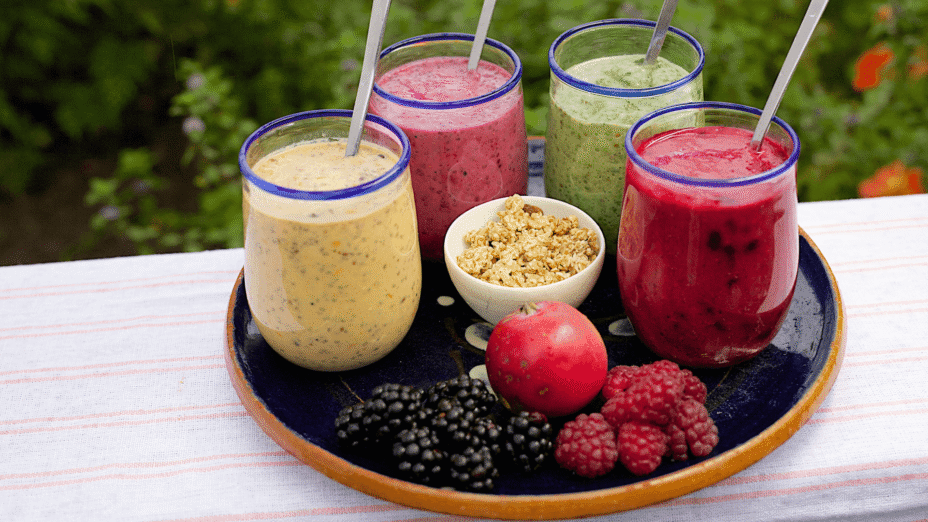The concept of “healthy food” is far from static. Consumer preferences, scientific discoveries, and environmental concerns are constantly reshaping what we eat and how we perceive nutrition. This piece explores the current landscape of trending healthy foods and dietary approaches, examining the science behind the buzz and offering practical insights for incorporating these trends into your own diet.
1. Seaweed: The Ocean’s Superfood (Global)

Seaweed is experiencing a major resurgence, moving beyond sushi and into mainstream healthy eating.
- Nutrient Powerhouse: Rich in iodine, vitamins, minerals, and antioxidants.
- Sustainable Food Source: Requires minimal resources to grow and absorbs carbon dioxide.
- Versatile Ingredient: Can be used in salads, soups, smoothies, and as a seasoning.
- Kelp Noodles: A low-carb, gluten-free alternative to pasta.
2. Ancient Grains: Beyond Quinoa (Global)
While quinoa remains popular, other ancient grains are gaining recognition for their nutritional benefits.
- Farro: A nutty-flavored grain with a chewy texture, high in fiber and protein.
- Spelt: An ancient wheat variety with a slightly sweet flavor, easier to digest than modern wheat for some.
- Kamut: A Khorasan wheat variety, rich in protein and antioxidants.
- Teff: A tiny grain from Ethiopia, high in iron and calcium.
3. Mushrooms: Functional Foods for Body & Brain (Global)
Beyond their culinary appeal, mushrooms are increasingly recognized for their medicinal properties.
- Lion’s Mane: Promotes brain health and cognitive function.
- Reishi: Supports immune function and reduces stress.
- Chaga: Rich in antioxidants and may have anti-inflammatory properties.
- Shiitake: Contains compounds that may boost immune function and lower cholesterol.
4. Fermented Foods: Gut Health Heroes (Global)

The gut microbiome continues to be a central focus in healthy eating, driving demand for fermented foods.
- Kimchi: Korean fermented cabbage, rich in probiotics and antioxidants.
- Sauerkraut: Fermented cabbage, a good source of fiber and vitamins.
- Kefir: A fermented milk drink, even richer in probiotics than yogurt.
- Miso: Fermented soybean paste, a staple in Japanese cuisine.
5. Regenerative Agriculture Foods: Supporting Soil & Sustainability (US & UK)
Consumers are increasingly seeking foods produced using regenerative agriculture practices.
- Improved Nutrient Density: Regeneratively farmed foods are often richer in nutrients due to healthier soil.
- Carbon Sequestration: Regenerative practices help sequester carbon from the atmosphere.
- Biodiversity: Supports biodiversity and ecosystem health.
- Look for Certifications: Regenerative Organic Certified (ROC) is a growing certification standard.
6. Plant-Based Proteins: Beyond Tofu (Global)
The demand for plant-based protein sources continues to grow, with innovative options emerging.
- Tempeh: Fermented soybean cake, a good source of protein and probiotics.
- Seitan: Wheat gluten, a high-protein meat alternative.
- Lentils & Pulses: Affordable and versatile sources of protein and fiber.
- Hemp Seeds: A complete protein source, rich in omega-3 fatty acids.
7. Culinary Approaches: Mediterranean & Nordic Diets (Global)
Specific dietary patterns are gaining recognition for their health benefits.
- Mediterranean Diet: Emphasizes fruits, vegetables, whole grains, legumes, nuts, seeds, olive oil, and fish. Linked to reduced risk of heart disease, stroke, and cognitive decline.
- Nordic Diet: Similar to the Mediterranean diet, but with a focus on local, seasonal ingredients like berries, root vegetables, and fatty fish.
8. Adaptogenic Foods & Herbs (Global)
Adaptogens are substances that help the body adapt to stress.
- Ashwagandha: An Ayurvedic herb that may reduce stress and improve sleep.
- Rhodiola: May improve cognitive function and reduce fatigue.
- Holy Basil (Tulsi): An adaptogenic herb with antioxidant and anti-inflammatory properties.
Practical Tips for Incorporating Trends:
- Start Small: Don’t try to overhaul your diet overnight. Introduce one or two new foods or practices at a time.
- Focus on Whole Foods: Even within trending categories, prioritize whole, unprocessed foods.
- Read Labels Carefully: Be aware of added sugars, unhealthy fats, and artificial ingredients.
- Listen to Your Body: Pay attention to how different foods make you feel.
- Sustainability Matters: Consider the environmental impact of your food choices.
Conclusion: A Dynamic and Delicious Future of Healthy Eating

The world of “healthy food” is constantly evolving, driven by scientific discoveries, consumer demand, and a growing awareness of the interconnectedness of food, health, and the environment. By staying informed, experimenting with new ingredients, and prioritizing whole, sustainable foods, we can create a dynamic and delicious approach to healthy eating that supports our wellbeing and the planet. The key is to embrace a mindset of continuous learning and adaptation, recognizing that the journey towards optimal nutrition is a lifelong adventure.
